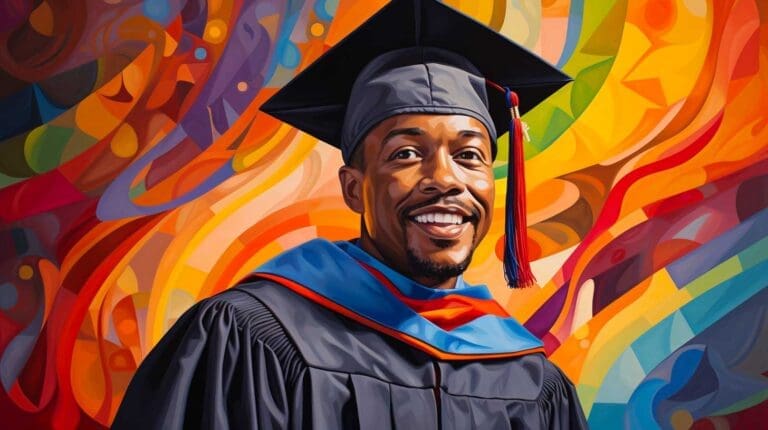From entry-level openings to advanced-level positions, here are a dozen careers for photographers that can be unlocked with a degree.
Individuals who pursue a photography degree typically have a balance of multiple skills. They are creative, storytellers, and artistic. At the same time, they are good at technical matters. This gives those with a degree a unique blend of knowledge and skills that can open many careers for photographers.
Read More: How an Art Degree Can Unlock Your Career Potential

1. Photo Technician
The average annual salary for a Photo Technician is $42,150
A photo technician is responsible for managing the technical aspects of photographic processes, ensuring high-quality prints or digital images. They operate and maintain various photo-processing equipment, including printers, scanners, and photo-editing software.
Photo technicians may also assist customers in selecting the appropriate photo services, handle image retouching, and troubleshoot any technical issues. Additionally, they organize and catalog photo archives, ensuring efficient retrieval and storage of images.
Attention to detail, technical proficiency, as well as customer service skills are essential for success in this role.
2. Camera Operator
The average annual salary for a Camera Operator is $47,629
A camera operator is responsible for capturing visual content for film, television, or digital media projects. They operate cameras to frame shots as per the director’s vision, considering factors like composition, lighting, and camera movement.
Camera operators may work in various settings, from studios to outdoor locations, and collaborate closely with directors, producers, and other crew members. Their duties also include adjusting camera settings, coordinating movements with actors or subjects, and ensuring the technical aspects of the shot — such as focus and exposure — are optimal for creating compelling visual narratives.
Attention to detail, creativity, and technical proficiency in handling camera equipment are key skills for success in this role.
3. Photojournalist
The average annual salary for a Photojournalist is $50,300
A photojournalist plays a vital role in visual storytelling for news outlets. They capture impactful images that convey news stories, often working in dynamic and sometimes challenging environments.
Photojournalists attend events, conduct interviews, and travel to document news stories through compelling visuals. They must be quick-thinking, adaptable, and possess strong ethical standards as their work contributes to shaping public perception and awareness.
In addition to photography skills, photojournalists often collaborate closely with reporters, ensuring that their visuals align with the narrative of the news piece. Photojournalists are expected to provide a comprehensive and engaging account of current events.
4. Photo Retoucher
The average annual salary for a Photo Retoucher is $52,310
A photo retoucher specializes in post-production work to enhance and perfect digital images. They meticulously edit photographs using software to correct imperfections, adjust lighting, and refine overall aesthetics.
Photo retouchers collaborate with photographers and clients to understand specific requirements, ensuring that the final images align with the desired vision.
Precision and a keen eye for detail are crucial, as photo retouchers delicately balance the enhancement of visuals without compromising the authenticity of the original images. Their work often contributes to creating polished and visually appealing photographs for various purposes, from commercial campaigns to editorial content.
5. Content Producer
The average annual salary for a Content Producer is $53,670
A content producer is responsible for overseeing the end-to-end creation of digital content. This role involves developing, planning, and executing creative strategies for various platforms, ensuring content aligns with brand goals and resonates with the target audience.
Content producers collaborate with writers, designers, and multimedia specialists to generate engaging material, whether it’s articles, videos, or social media posts. They also manage production schedules, and budgets, and often engage in market research to stay abreast of trends, ensuring the content remains relevant and impactful in a competitive digital landscape.
Effective communication, creativity, and organizational skills are paramount in the multifaceted role of a content producer.
Read More: High-Paying Art Degree Careers
6. Videographer
The average annual salary for a Videographer is $54,547
A videographer is tasked with capturing and creating compelling video content. Their responsibilities include planning and setting up shots, operating cameras and other recording equipment, and ensuring the visual narrative aligns with the project’s goals. This makes videography a great career for photographers.
Videographers often collaborate with directors, scriptwriters, and other creative professionals to bring ideas to life through motion pictures. They may also handle post-production tasks, such as video editing and color grading, to produce a polished final product.
Strong technical skills, creativity, and an understanding of visual storytelling are essential to success in the field of videography.
7. Graphic Designer
The average annual salary for a Graphic Designer is $55,310
A graphic designer is responsible for creating visually appealing and effective designs across various mediums. Their duties include interpreting client briefs, conceptualizing design ideas, and producing layouts for print, digital, or multimedia applications.
Graphic designers use design software to craft logos, marketing materials, and website graphics, ensuring that the visual elements align with the client’s brand and message. They may also collaborate with clients or internal teams, incorporating feedback to refine designs.
A blend of artistic creativity, technical proficiency, and a keen understanding of design principles is essential for success in the diverse field of graphic design.
8. Photo Editor
The average annual salary for a Photo Editor is $57,341
A photo editor is responsible for enhancing and refining visual content, ensuring it meets the desired standards for publication or display. They review and select photographs, applying editing techniques such as cropping, color correction, and retouching to improve overall quality.
Photo editors collaborate with photographers and art directors, ensuring that the final images align with the creative vision and editorial guidelines. Additionally, they may manage photo libraries, organize digital assets, and stay updated on industry trends and software to maintain high standards of visual storytelling.
Precision, creativity, and a keen eye for detail are critical skills for executing the role of a photo editor successfully.
9. Photographer
The average annual salary for a Photographer is $60,118
A photographer is responsible for capturing compelling images using various photographic equipment. They interpret creative briefs, plan and set up shots, and consider factors like composition, lighting, and angles to achieve the desired visual impact.
Photographers work across diverse settings, including studios, events, or natural environments, and often specialize in areas such as portrait, commercial, or documentary photography. Beyond capturing images, they may edit and retouch photos, manage equipment, and engage with clients to understand their visual requirements.
Strong technical skills, artistic vision, and effective communication are required to ensure the successful execution of a photographer’s duties.
10. Film/Video Editor
The average annual salary for a Film/Video Editor is $62,571
A film/video editor plays a crucial role in shaping the narrative and visual impact of a production. They meticulously assemble raw footage, applying artistic and technical skills to create a seamless and compelling final product.
Film editors work closely with directors to understand the creative vision, selecting the best shots, and arranging them to evoke emotion and storytelling continuity. They also collaborate with sound designers, incorporate special effects, and ensure the pacing aligns with the desired cinematic experience.
Precision, creativity, and an in-depth understanding of narrative flow are crucial in the intricate process of film/video editing.
11. Advertising Art Director
The average annual salary for an Advertising Art Director is $82,078
An advertising art director is responsible for visually conceptualizing and executing creative campaigns. They work closely with creative teams, copywriters, and clients to develop compelling visual concepts that effectively communicate a brand’s message. Due to the skills needed, this is a great aspirational career for photographers.
Art directors oversee the design and layout of advertising materials across various platforms, ensuring that the visuals align with the campaign strategy and brand identity. They may also guide and mentor graphic designers, photographers, and other creative professionals to ensure the artistic vision is consistently maintained throughout the advertising campaign.
A combination of artistic vision, strategic thinking, and effective collaboration defines the role of an advertising art director in the dynamic world of advertising and marketing.
12. Art Manager
The average annual salary for an Art Manager is $93,617
An art manager is responsible for overseeing the artistic aspects of a project or organization. They collaborate with creative teams, providing guidance on visual direction and ensuring that artistic deliverables align with the overall goals
Art managers often work in fields such as advertising, design, or entertainment, supervising graphic designers, illustrators, and other artists. They may also manage budgets, timelines, and client expectations, balancing creative vision with practical constraints.
Effective leadership, communication, and a deep understanding of artistic processes are essential for art managers to successfully navigate and coordinate diverse creative projects.








